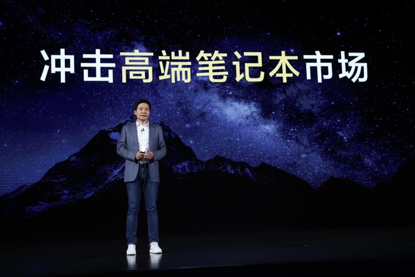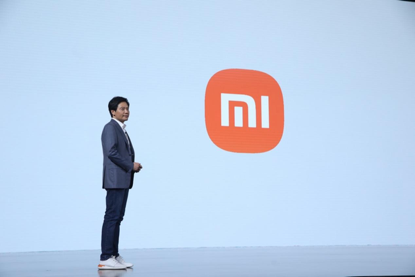Need more new stories.
The return of the Xiaomi folding screen mobile phone MIX with self-developed C1 chip
After two years, the Mi MIX series returned to the world with the official line of Mi’s “I’m coming back”. At the press conference on March 30, Lei Jun lifted the veil for MIX FOLD.
“This may be the most powerful folding screen mobile phone at present.” Lei Jun defined MIX FOLD as the first folding screen mobile phone, targeting the ultra-high-end market.
“In my tenth anniversary speech last year, I talked about the three iron rules of Xiaomi: technology-oriented, cost-effectiveness-oriented, and making the coolest products.” Lei Jun said.
From the perspective of various parameters, the MIX FOLD, which is priced at only 9999 yuan, does meet Xiaomi’s concept of “the coolest product”. “Using a super large 8.01-inch internally folded 2K+ resolution flexible screen, an external screen of 6.52 inches, equipped with self-developed surging C1 professional image processor, the world’s first mobile phone liquid lens, equipped with a four-speaker 3D panoramic sound system, and a 5020mAh folding screen mobile phone The battery supports 67W wired fast charging.”
“Cool” is an evaluation that Lei Jun cares about. Around 2014, netizens commented that “Mi products are no longer cool” in order to resolve this embarrassing situation. The Xiaomi MIX, which was later named by Lei Jun as “The Charge of Xiaomi’s Reversal”, was formally established in 2014.
In October 2016, at the end of the Mi Note2 conference, Mi MIX appeared as One more thing. At that time, MIX won the most praise for Xiaomi mobile phones and also suffered the most doubts.
According to the official definition, Xiaomi MIX is a product from the future, and uses a number of “black technologies” to show muscles. For example, at the time, the most eye-catching mobile phone was its ultra-high screen-to-body ratio. Compared with the 70% screen-to-body ratio of ordinary mobile phones, Xiaomi MIX achieved 91.3%. At the same time, the front camera mounted on the chin was also deeply customized. Its volume is only 50% of a normal camera.
However, when the first generation of Mi MIX products was released, it was questioned by the market. The product yield rate was only 5%, and the cost was extremely high. The average cost of a ceramic back shell is 1,300 yuan, which is far from reaching the market stage in the mobile phone industry.
In a subsequent media interview, Lei Jun did not deny the mentality of trying Xiaomi MIX, and admitted that he was not prepared for mass production until the team informed
Xiaomi believes that the return of the surging chip has benefited from Xiaomi’s continuous R&D investment in the past few years. In the future, Xiaomi said that it will continue to increase investment in research and development. “In 2021, R&D investment will increase by 30%.”
Complete the high-end product line
At the beginning of last year, Lei Jun shouted the slogan “Strike the high-end market with all its strength” at the Xiaomi Mi 10 press conference, and made the Mi digital series 5,000 gears without precedent. In order to quickly occupy the market, Xiaomi 11 was released in the same year, and it expressed its determination: “On the way to hit the high-end market, Xiaomi will never move forward.”
“Xiaomi initially established itself in the high-end mobile phone market last year and will continue to make breakthroughs this year.” Lei Jun said at the press conference.
The financial report shows that in 2020, Xiaomi’s smartphone shipments will reach 146 million units, a year-on-year increase of 17.5%. The global sales of Xiaomi’s high-end smartphones priced at RMB 3,000 or above in mainland China and 300 euros or above overseas are around 10 million units worldwide.
In addition, thanks to the continuous increase in sales of mid-to-high-end products, Xiaomi’s smartphone ASP has steadily increased. In 2020, it increased by 6.1% year-on-year to 1,040 yuan, and in the fourth quarter it increased by 6.8% year-on-year to 1,009 yuan.
Before Xiaomi’s press conference, vivo, OPPO, and OnePlus all expressed their intention to impact the high-end market at the new product launch conference. At the beginning of this year, Glory, which completed the cutting with Huawei, also mentioned in its first new product launch conference to make its own P and Mate products.
Wu Yiwen, senior terminal analyst of Strategy Analytics China, a third-party market organization, previously analyzed that high-end product lines have higher profit margins, and the success of high-end product lines can positively promote the sales of the overall product line. Therefore, the high-end market is regarded by various mobile phone manufacturers as a strategic commanding height that must be seized.
In addition to mobile phones, Lei Jun announced that Xiaomi’s next goal is to impact the high-end notebook market in the process of continuing to become the ultimate high-end.
The Xiaomi Mi Notebook, which hasn’t updated its products for nearly a year, launched the high-end product Mi Notebook Pro 15 at this conference.
According to the product introduction, the core upgrade this time is the screen. Its resolution has been upgraded to 3.5K, the PPI has reached 261, and it has over 7.64 million pixels, which is 3.6 times that of ordinary FHD screens, and the screen-to-body ratio has also reached 93%.
It is worth mentioning that Mi Notebook Pro The E4 OLED screen is used this time, which has obtained the highest certification in the notebook industry from the VESA International Video Electronics Standards Association. And this screen material is usually used in notebooks worth more than 10,000 yuan.
Mi Notebook Pro is equipped with Xiao Ai and supports MIUI+, which facilitates cross-screen collaborative operations on mobile phones and computers. In addition, 170# ceramic sandblasting is used on the fuselage to make the whole machine feel better.
“This time, our notebook products are produced through mobile-level high-end technology.” Lei Jun said.
In addition to mobile phones and computers, Xiaomi also released many AIoT product lines this time, including air conditioners, sweeping robots and humidifiers.
It can be said that this press conference is not only a “war of rectification” for Xiaomi’s mobile phones to gain a foothold in the high-end market, but also a declaration that Xiaomi intends to complement the entire series of high-end product lines such as computers and IoT.
Xiaomi’s new story: making cars
As soon as the second half of the press conference opened, Lei Jun announced that a new logo will be adopted to welcome Xiaomi’s new decade.
The designer of the new logo is the world-renowned designer Kenya Hara, who and the Xiaomi team created the new logo of Xiaomi in 3 years.
When talking about design concepts, Kenya Hara believes that the more technology evolves, the closer it is to the form of life. Therefore, humans and technology are constantly getting closer. Therefore, Kenya Hara put forward the design concept of “Alive” and integrated the thinking of Eastern philosophy. Starting from the “relationship between technology and life”, a new logo was designed.
When Lei Jun explained the connotation of the new logo to the audience, the logo of the Xiaomi Mobile Internet Industrial Park in Xierqi, Beijing was officially replaced.
This may be the beginning of a new decade for Xiaomi.
At the end of this conference, Lei Jun announced another major decision for Xiaomi in the new decade-to officially enter the smart electric vehicle industry.
“In the past 75 days, we have experienced 85 industry visits and communication, more than 200 in-depth exchanges with automotive industry veterans, 4 internal management discussions, and two formal board meetings. Today, we finally ushered in The most important decision in Xiaomi’s history: Xiaomi officially enters the smart electric car market.” Lei Jun announced that he will personally lead the team to complete the last major entrepreneurial project in his life.
In the next ten years, Xiaomi will invest 10 billion U.S. dollars, and the first phase will invest 10 billion yuan in electric vehicle projects.
This decisionDing is also regarded by Lei Jun as the fourth major transformation in his life after Jinshan became the CEO, transformed into an angel investor, and personally took over the Xiaomi mobile phone department.
On January 15 this year, Xiaomi began investigating the electric vehicle project.
“This decision is too important for Xiaomi today.” Lei Jun said, Xiaomi is very aware of the risks in the auto industry, and tens of billions of investment can take three to five years to bear fruit. This is not a small risk for Xiaomi, but Xiaomi, which has started a business for ten years, has already accumulated a certain amount.
With two and a half hours before this conference, Xiaomi announced that it will enter the smart electric vehicle industry. Subsequently, Xiaomi conducted a survey on car making on Weibo, and it turned out that more than 95% of netizens supported Xiaomi’s car making.
Lei Jun and Xiaomi’s confidence come from the R&D team of more than 10,000 people, the steady growth of the world’s third mobile phone business, the best smart ecology, and a cash reserve of 108 billion yuan.
In Lei Jun’s view, whether it is from programmers to managers, from entrepreneurs to investors, or from the Internet to hardware, it is a huge renovation of cognitive structure and life experience.
“In these few major transformations, some are passive strains, and some are active choices. But no matter which kind, they require fearless courage, firm will, super strong learning ability, and toughness to fight great pain. At the press conference, Lei Jun was a little excited and choked for a while.
For the new story of building a car, Lei Jun said that as long as Mi Fan is willing to wait, he will have the confidence, awe and patience to build it. “I am willing to suppress all the reputation in my life and fight for Xiaomi cars.”


